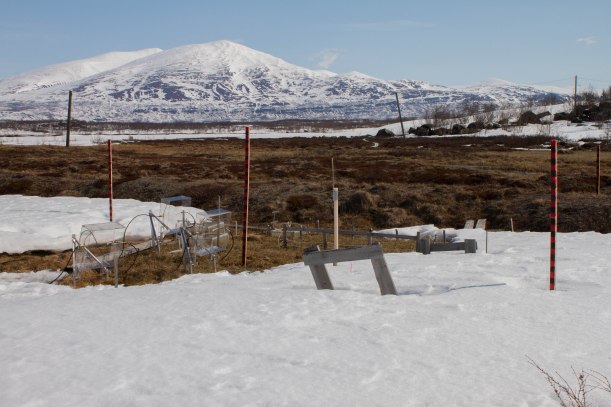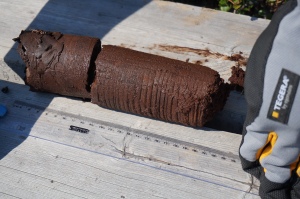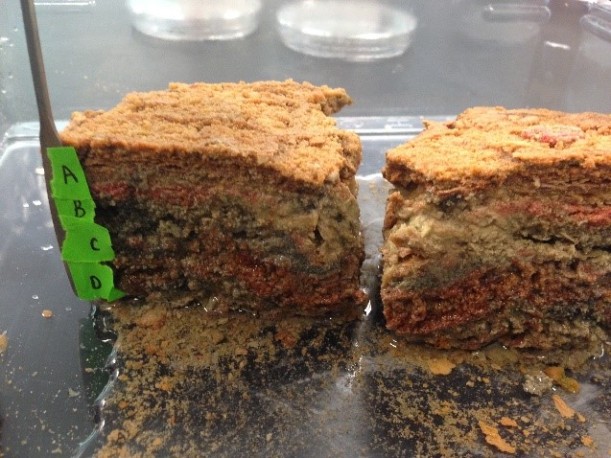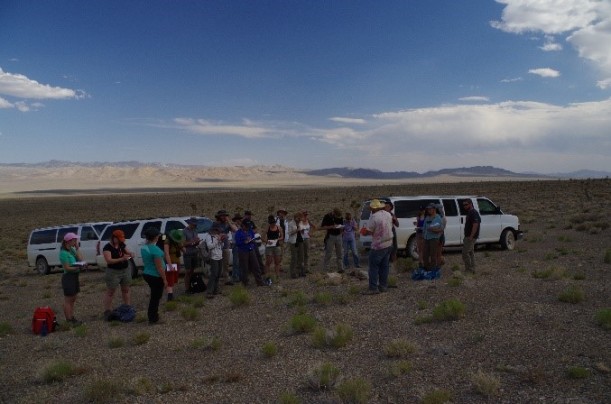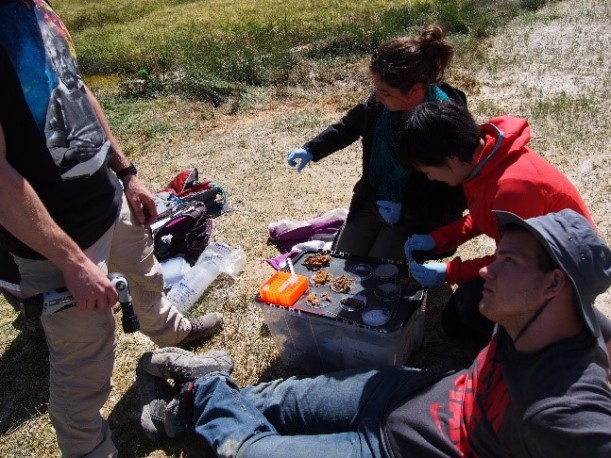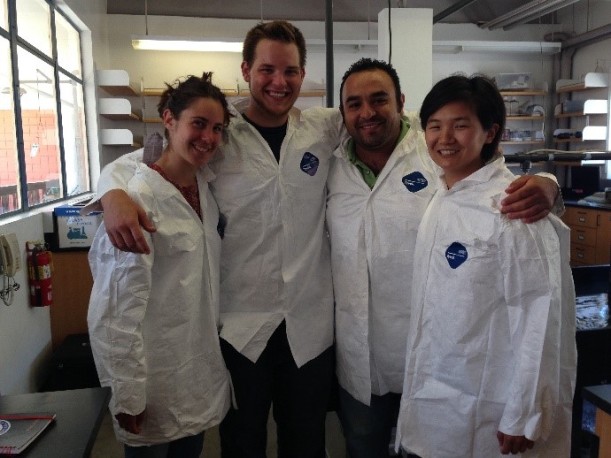
Shetterly (center) discusses her book. (Photo credit: Chris Booker, Asst. Dir. Media Relations, OSU )
This Tuesday Kelsey and I, along with our friends from the Wilkins Lab, attended a panel discussion with Margot Lee Shetterly, author of the bestselling book and Oscar-nominated film, Hidden Figures. This panel was presented as a collaboration by the College of Engineering, Ohio State ADVANCE, and the Honda-OSU Partnership.
The event opened with an inspiring speech by computer science and engineering senior Damonique Thomas, who credited much of her success to OSU and the people and experiences she has had here – “I can apologetically be myself: a smart, African American woman engineer.” President Michael Drake took the podium to speak on the history, importance, and infleunce of diversity at OSU, and introduced Margot Lee Shetterly.
“Hidden Figures,” Shetterly said, “is more than just women’s history or African-American history – it is American history.” She shared her experience growing up Hampton Virginia, where she notes “the face of science was brown like mine.” Instead of having the typical image of a scientist being a white man, Shetterly knew scientists as her father (a NASA scientist), relatives (engineers and technologists), family friends (aeronautical engineers and sonic boom experts), and neighbors (mathematicians and physicists). A recurring theme of her novel, Shetterly emphasized, was looking beyond – looking beyond preconceived notions of what someone can or cannot be, looking beyond the limits of what you think you are capable of, and looking beyond barriers that seem immovable.
Shetterly was joined by four panelists: Associate Professor Wendy Smooth, Todd Corley (Chief Diversity and Inclusion Officer at OhioHealth), Rudy Buccheit (Associate Dean for Academic Affairs and Administration in the College of Engineering), and Mary Juhas (Associate Vice President of the Office of Research). Some discussion points from their conversation follow.
- Advice to those who are “already at the table”: “Be aware that your presence at that table is a privilege, and then use that privilege to bring others to the table,” said Rudy Buchheit. “As men, notice how you interact with men versus how you interact with women. That’s the beginning of reshaping your implicit biases.”
- “Hidden Figures” perspective: This American story is told from the perspective of African-American women to expose history. “All of us contribute to history, but the story is then told from the perspective of the top.” Shetterly said she wanted to see her personal experience reflected in this history, while also allowing others to claim it as a great American story.
- Connections: Mary Yuhas advised the audience to “never underestimate the power of the network!” She noted that women are often isolated in their workplace, so it is important to get together and open a discussion.
- Promoting diversity in the workplace: “You need to hold people accountable for their behavior – how they act, how to do the right thing,” said Todd Corley. It’s important to provide resources, support, and encouragement while removing inhibiting policies and barriers.
- When we make efforts to support underrepresented groups, “We can’t just open the door,” said Smooth. “We must also change the way we function and change the physical space. It’s one thing to say it’s okay that you’re here. It’s another thing to say we are prepared to have you thrive.”
- On mentorship: “All people and all projects must find champions. You don’t know where those mentors will come from. It’s amazing to see people like you succeeding and to find people who you think aren’t like you, but they actually are,” said Shetterly. “The packages our mentors come in are not always the packages that we expect,” said Smooth.
I really enjoyed Shetterly’s reflection on what is means to “look beyond” and find what may be hidden.
“This is an American story. It is a story of excellence and it expands the idea of what people are capable of,” said Shetterly. “Put yourself in a position that perhaps you didn’t think was possible before. You can become more than perhaps what you think. Be inspired by what these women did.”
Ohio State is using powerful and meaningful collaboration to build a research community that will close the gap for women and minorities in STEMM. While much has been achieved, there is still a lot to do. Join the conversation with these resources below:
VIEW THE RECORDED LIVESTREAM HERE
Event Recap and Women in STEM Features



Kelsey and Nicole getting their books signed by author Margot Shetterly (seated)


 14th, the 9th floor of Riffe received a very special Valentine’s Day gift – a water bottle filling station! This energy-efficient station has a spot to fill up your water bottle and also has a traditional water fountain spout. In our efforts to be a green and sustainable lab, we wanted to reduce water bottle waste and encourage healthy hydration habits for lab members. In two days, we have already filled over 70 bottles worth of water from this station. It’s fun to see the “Helped eliminate waste from #### disposable plastic bottles” number increase every time you refill your water bottle. This wouldn’t have been possible without the incredible coordination by laboratory supervisor
14th, the 9th floor of Riffe received a very special Valentine’s Day gift – a water bottle filling station! This energy-efficient station has a spot to fill up your water bottle and also has a traditional water fountain spout. In our efforts to be a green and sustainable lab, we wanted to reduce water bottle waste and encourage healthy hydration habits for lab members. In two days, we have already filled over 70 bottles worth of water from this station. It’s fun to see the “Helped eliminate waste from #### disposable plastic bottles” number increase every time you refill your water bottle. This wouldn’t have been possible without the incredible coordination by laboratory supervisor 


